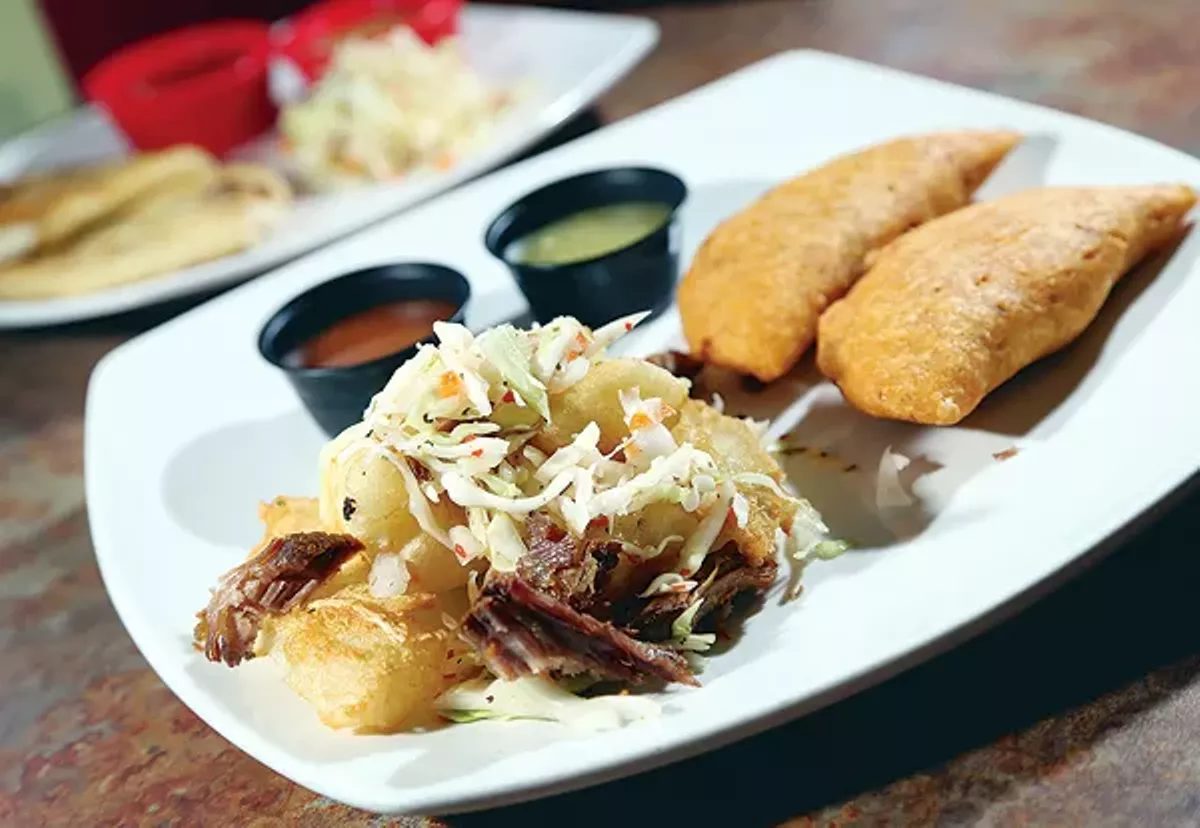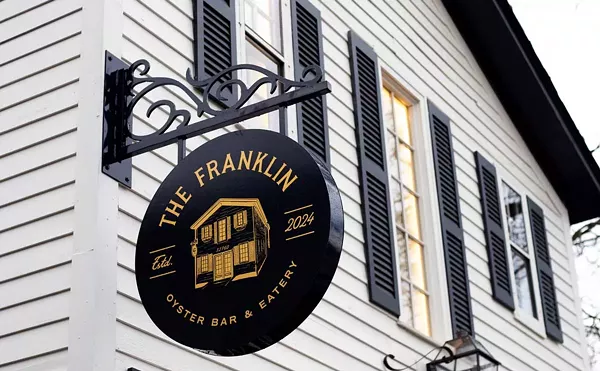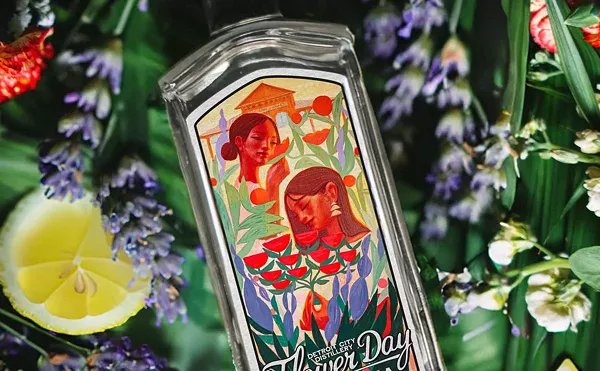

Audio By Carbonatix
[
{
"name": "GPT - Leaderboard - Inline - Content",
"component": "35519556",
"insertPoint": "5th",
"startingPoint": "3",
"requiredCountToDisplay": "3",
"maxInsertions": 100,
"adList": [
{
"adPreset": "LeaderboardInline"
}
]
}
]
We've been hearing about the devastating conditions in Central America, as teenagers brave the long and dangerous trek through Mexico to the Texas border. Poverty there can be god-awful. I remember, years ago, hearing Guatemalans talk about having nothing to eat but tortillas and salt; the salt was the luxury part.
When people can afford it, though, there is tasty cuisine to be had in Central America, including dishes made from just the most basic ingredients, like corn and beans.
The residents of each Central American country have a nickname: Hondurans are called catrachos, Guatemalans are chapines, Salvadorans are guanacos; thus the name of this seven-month-old spot in Troy. There surely aren't enough Salvadorans in the neighborhood to support a restaurant, so it's a good thing El Guanaco's comida is fine enough to appeal to anyone. (As is my custom in such restaurants, I ignored the section of the menu labeled Mexican, but there are "super burritos" and nachos if you must.)
When I visited, the clientele was a mix of Latinos and others, though I'm told that during the World Cup the whole crowd was yelling at the screen in Spanish. Posters for the fútbol teams of Real Madrid and Barcelona are part of the décor in the bright space with floor-to-ceiling windows.
To drink, you should start with horchata; there is no alcohol. Salvadoran horchata is better than Mexican horchata, which is based on rice. The Salvadorans use morro seeds, which have a nutty flavor, and milk. (Similarly excellent horchata can be found at the other end of Livernois, in Southwest Detroit at La Pupuseria, whose cooks are also Salvadoran.) There are other aguas frescas like tamarindo and passion fruit, and licuados, or smoothies, including mango and papaya.
Everything is served with curtido, a typically Salvadoran cabbage slaw with either carrots or, the fancier version, carrots, tomatoes and jalapeños. You'll also get warm chips and an excellent tomato-y salsa, made "frescacita" — as fresh as can be — every day, according to manager Ricky.
The most bang for the buck is a platter, such as Guanaco Platter #2, with two pupusas, two tamales, two empanadas, rice and beans, and 4 ounces of steak. The empanadas, which in some hands can be dry, are moist here, and the oblong tamales have way more than token stuffing, either chicken or well-spiced pork or, which sounds redundant, a corn-stuffed tamale, the filling slightly sweet. For the steak, which is topped with a tangle of onions and peppers, think of fajita-meat not cut into strips. It's marinated and on the tough side, in the Central American way, but not as thin as some.
Guanaco Platter #1 is generous, too, with spicy chicken, shrimp cooked with the same spices (which Ricky said the cook does not reveal) and crisp and fatty chicharrón. It's a sign of authenticity that the side-dish beans, black or red, are often puréed. They may look like nursery food but the taste is great and the texture is creamy.
Soups are numerous: beef, chicken, pig's feet, shrimp, menudo, seafood and pozole. Remember that these are really a meal in a bowl. The beef, for instance, contains yucca, carrots, potatoes and zucchini — big hunks, not Campbell-style cubelets. Chicken soup is even richer, full of squash. Soups come with two big, thick, handmade corn tortillas, which bear little relation to the store-bought flimsies.
For dessert, there are the usual delectably sweet and rich fried plantains served with sour cream and black beans — hard to go wrong — or for an inexplicable $1.59, a croquette of mashed plantain filled with crema, with the same exquisite plantain goodness.
I liked everything at El Guanaco, but if I wanted to pitch one dish, it would be the $2.29 tamale. Many gringos seem to like the dry, cylindrical Mexican tamales, and they may have their charms, but a moist, banana-leaf wrapped Salvadoran (or Honduran or Guatemalan) tamale is a different creature, with a moist, thick body and a filling that does more than make the record. Even the bean tamales here are recommendable — and about as close as you can get to the heart and soul of Central American cuisine.






